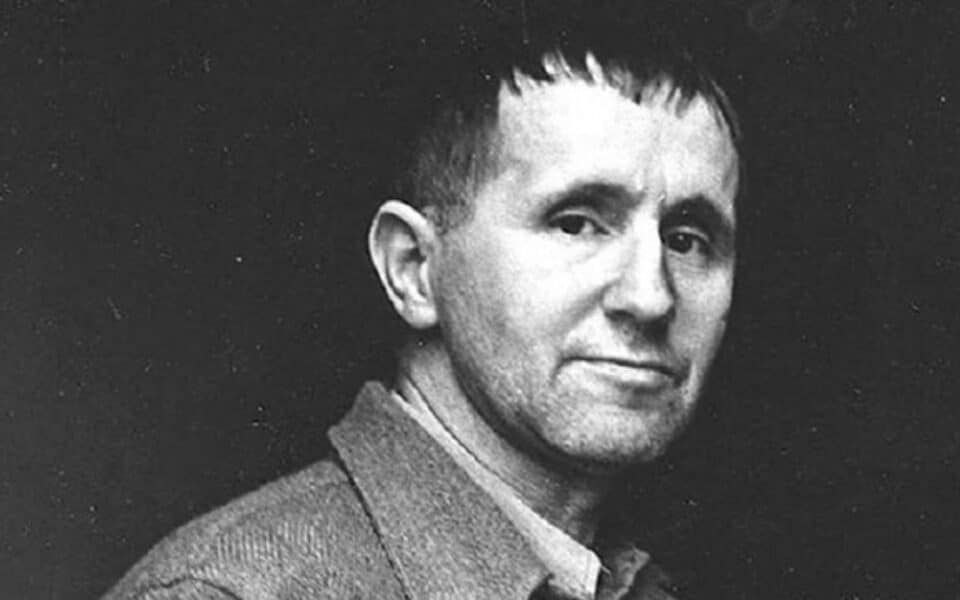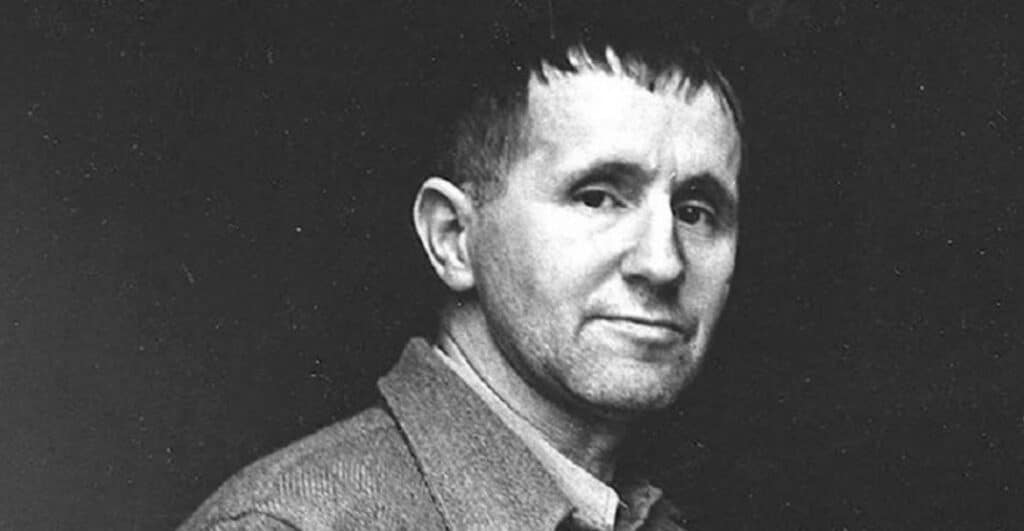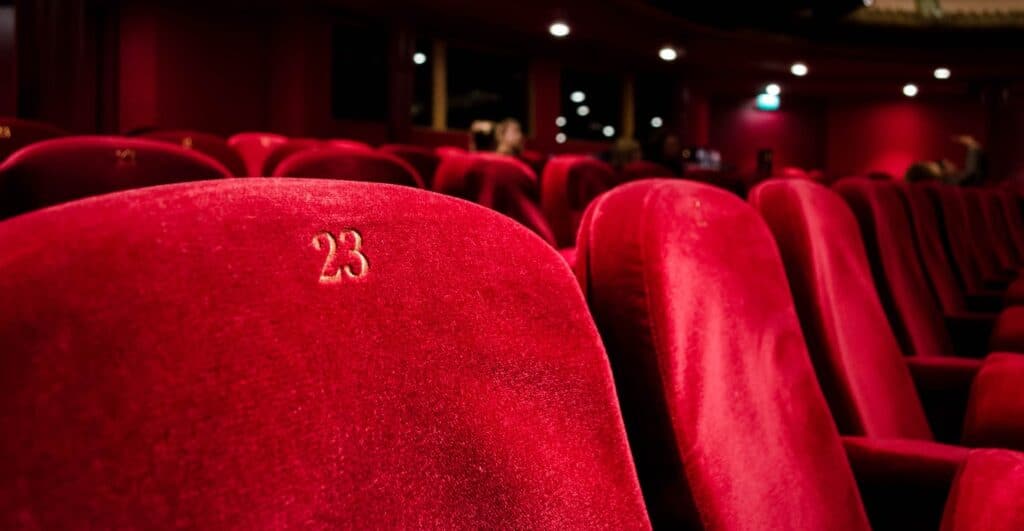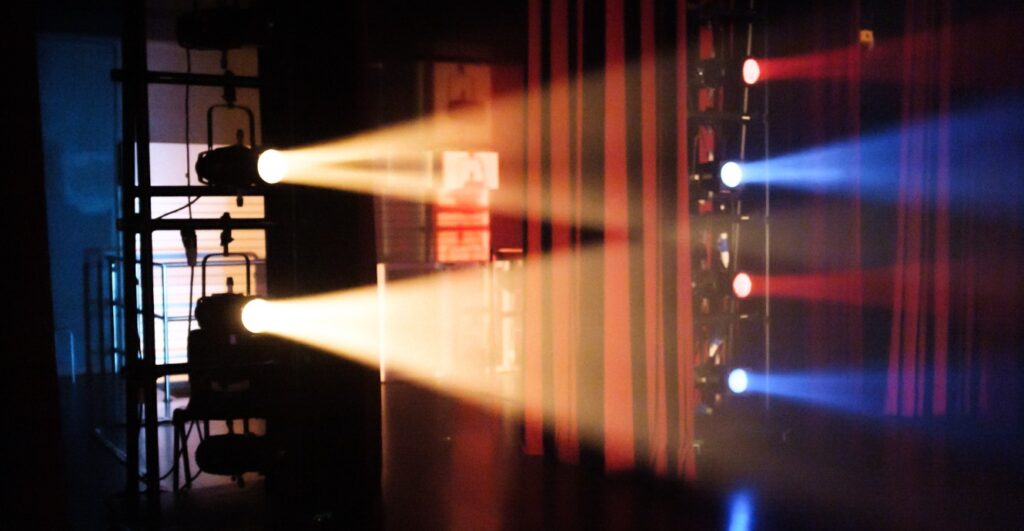News
19th June 2023
Best Movie Soundtracks Of All Time

News
26th November 2021

Bertolt Brecht was a German playwright, whose ideas were very influential to theatre. Brecht wanted to make the audience think and used different devices to remind them that they were watching theatre and not real life. We’re going to delve deep into Brechtian theatre, explore Brecht’s techniques and learn how you can apply them to your own work.
What is Brechtian theatre meaning and what is Brechtian style acting? Brecht was one of the main theatre practitioners who shaped ‘Epic Theatre’ and changed the theatrical landscape so drastically that his work is still hugely influential today. Brechtian theatre was created because Brecht wanted to make his audience think and famously said that theatre audiences at that time “hang up their brains with their hats in the cloakroom”.
In naturalistic or dramatic theatre, the audience invest in the lives of the characters on stage and as a result, often forget about their own lives. Brecht wanted his audiences to remain engaged and didn’t want them to watch his plays for escapism but instead interact and make judgements about any social issues in his work. To achieve this, he used a range of theatrical techniques to remind the audience that they were watching theatre; a presentation of life, not real life itself. He called the act of distancing the audience from emotional involvement the ‘Distancing Effect’ also known as ‘Verfremdungseffekt’. Let’s find out how you can act Brechtian theatre!

There are a lot of elements of Brechtian theatre. These are some of the most famous features of Brechtian theatre:
Rather than allowing the audience to sit passively and get lost in the show, the actors will sometimes directly address the audience with a speech, comment, or question to break down the fourth wall.

During a montage, short film clips are put together, often to portray factual events. Sometimes the clips are edited to juxtapose each other or to highlight the issues Brecht is trying to portray.
This helps to remind the audience that they are not watching real life. Often the songs are juxtaposed ironically, with happy upbeat music contrasting with dark, deep lyrics. One of the most famous song lyrics comes from Brecht’s ‘The Threepenny Opera’: ‘Who is the bigger criminal: he who robs a bank or he who founds one?’
Narration is employed to remind the audience that they are watching a story. The narrator might tell the audience what is about to happen, before it happens, because if the audience knows the outcome, then they might not get as emotionally involved.
Brecht believed the stage should be brightly lit at all times, unlike many other productions. He thought that sets shouldn’t be realistic, just suggestive and that actors should use minimal props, often only one per character. He also allowed props to be used in several different ways, for example a suitcase may double up as a desk.

In Brecht’s plays actors would sometimes step out of character, often at heightened moments of the action, to remind the audience that it is a piece of fiction that they are watching.
A placard, or projection screen can be used to give the audience some extra information, for example it might say how many people have died in a particular war. Placards can also be used to introduce characters, scenes, or to tell the audience when one scene has finished.
The actors may go into a freeze frame, to break up the action and give the audience time to think. Freeze frames are also used so the narrator can speak, or to allow an actor to come out of character and break the fourth wall. Those are some of the main characteristics of Brechtian theatre and things to consider if you’re thinking of creating a piece of theatre in this style.
Brecht created many epic theatre plays including:
Die Dreigroschenoper (1928; The Threepenny Opera),
The Caucasian Chalk Circle (first produced in English, 1948; Der kaukasische
Kreidekreis, 1949)
Mutter Courage und ihre Kinder (1941; Mother Courage and Her Children).
Other epic theatre playwrights and practioners include:
Erwin Piscator.
Vladimir Mayakovsky.
Vsevolod Meyerhold.
Brecht’s epic theatre was completely opposite to Russian director Konstantin Stanislavski’s work, in which the audience was persuaded, by staging methods and naturalistic acting, to believe that the action onstage was real. Instead, Brecht instructed his actors to separate themselves from the characters they portrayed and hide their own emotions whilst emphasizing stylized external actions as signs of social relationships. Gesture, intonation, facial expression, and grouping were all used to reveal overall attitudes of one character toward another. Compare the two acting methods in our article about the Stanislavski Technique.

Brecht’s plays are still very popular today and many plays still address current issues whilst remaining true to his famous ideals. We hope you’ve enjoyed learning about the elements of Brechtian theatre with us, practice using Brecht’s techniques in your own work and see how you get on! If you’d like to explore acting in more depth, we’ve got plenty of articles waiting for you, including Best Drama Schools: Best Drama Schools To Attend.
Allow Center Stage to sky-rocket your career and surface your talents to casting agents, booking agents, directors, and modelling agents worldwide. Pre-register by clicking the button below!